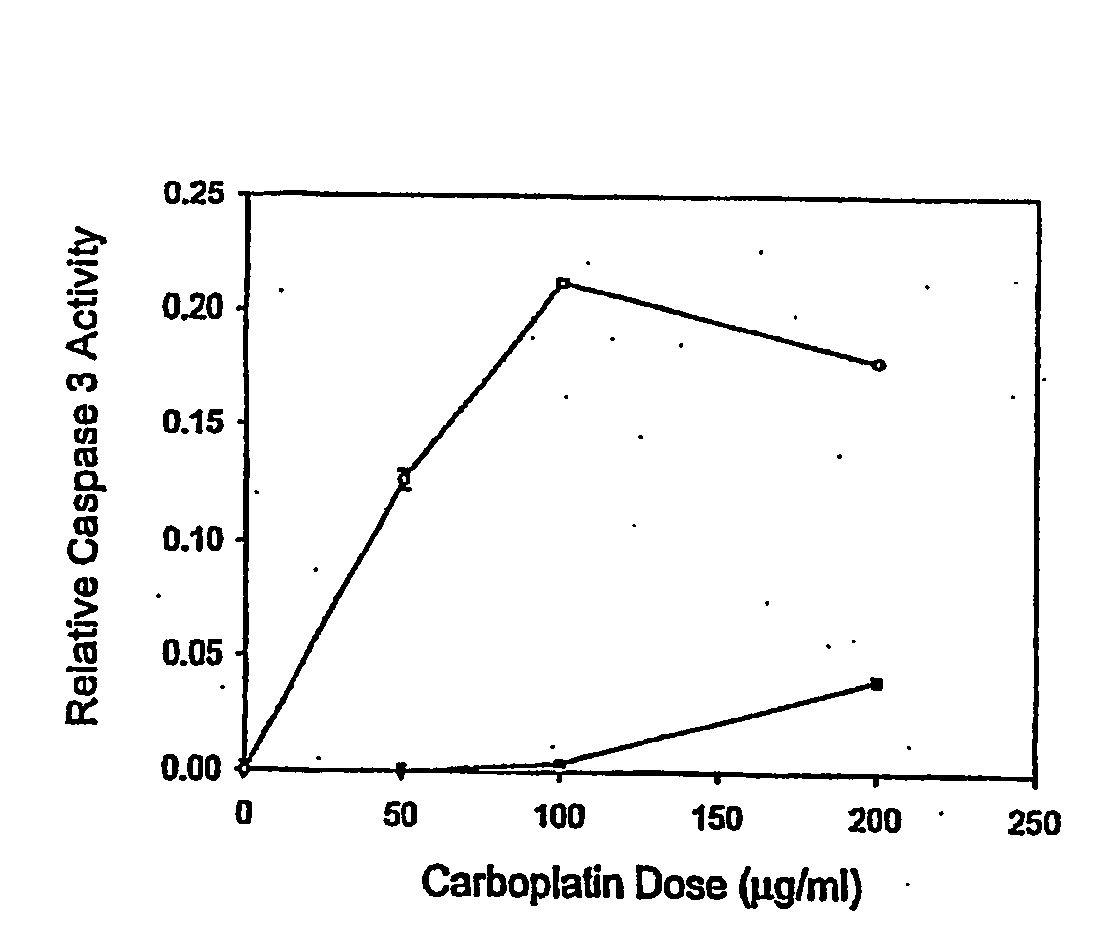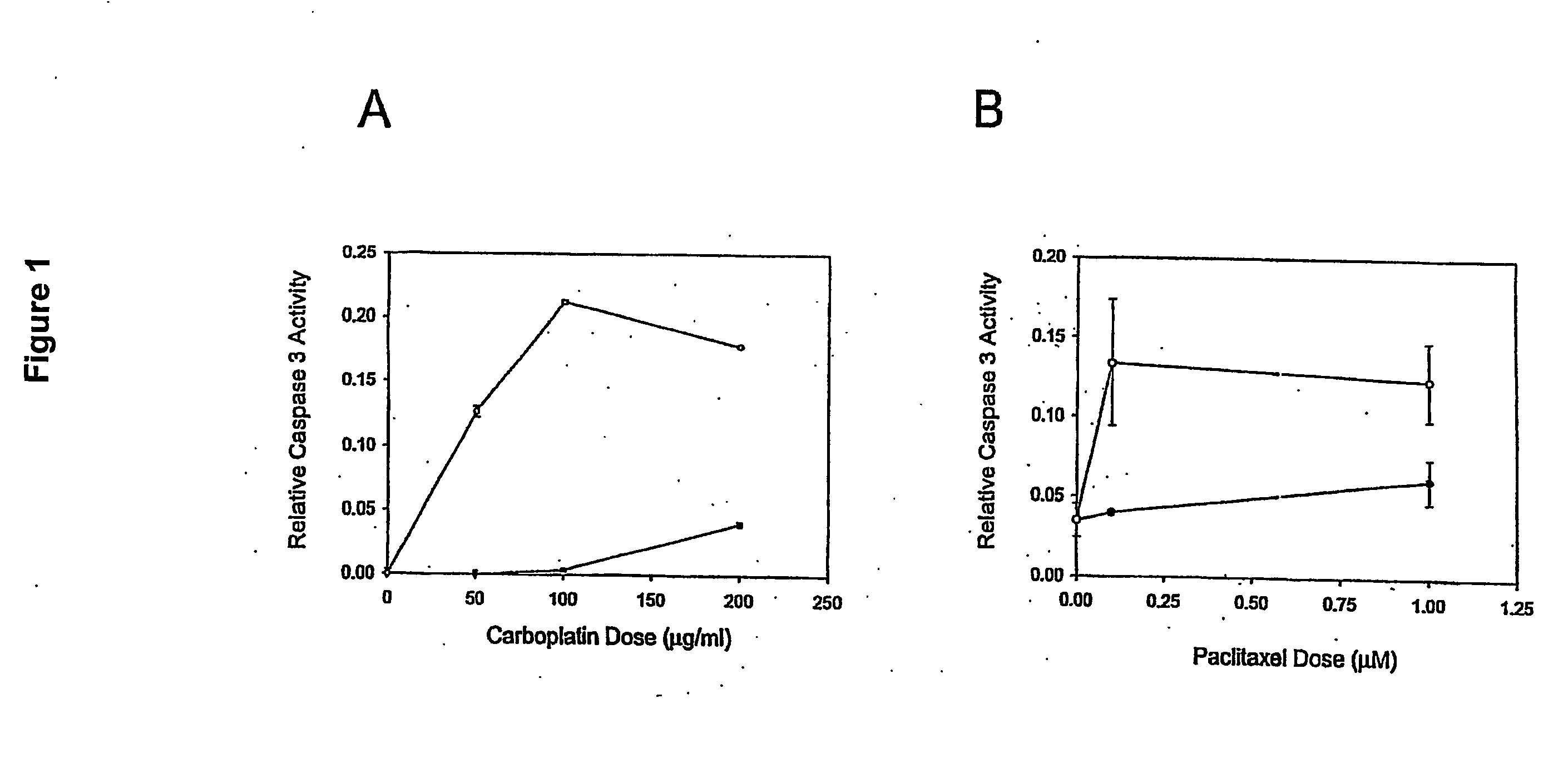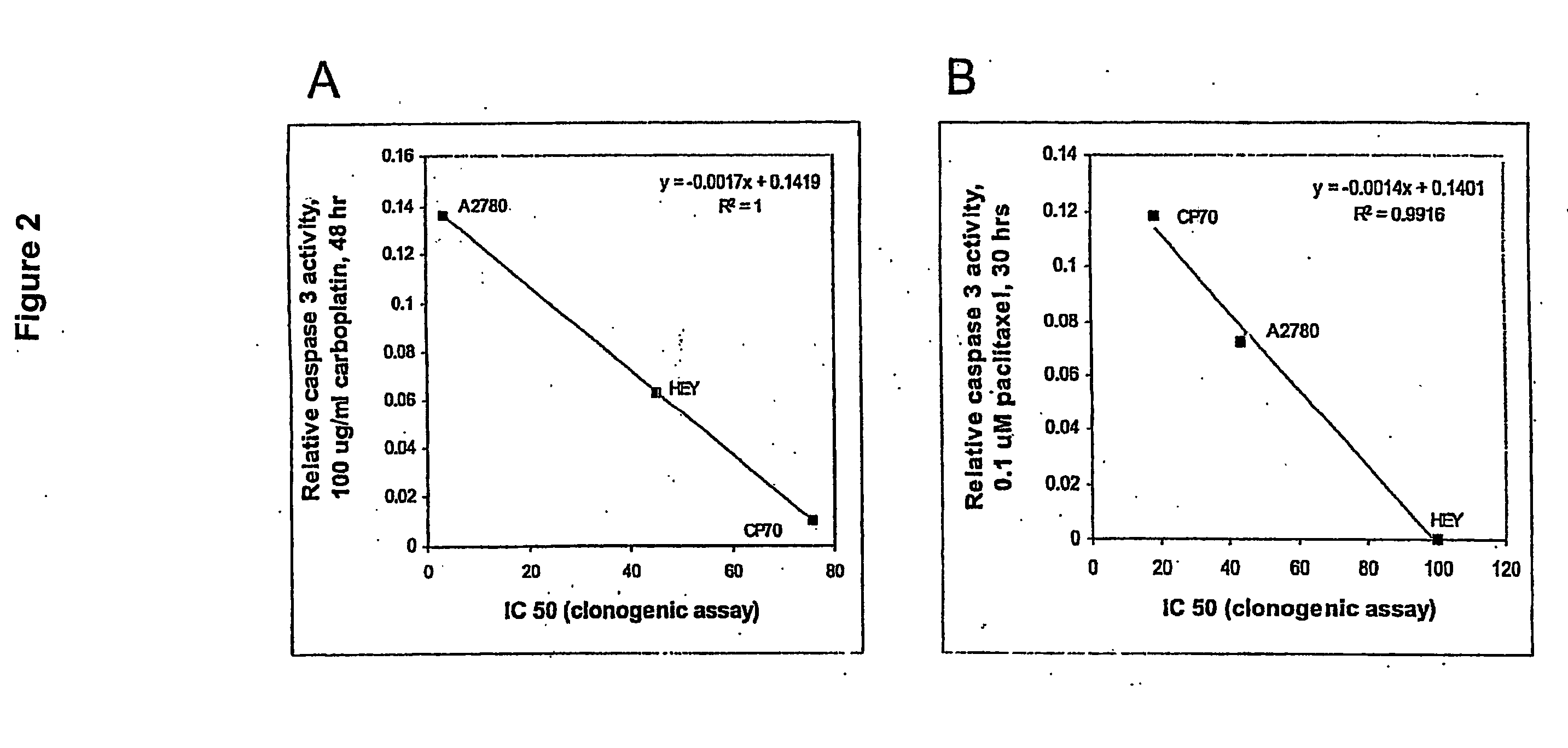Apoptosis-Based Evaluation Of Chemosensitivity In Cancer Patients
a cancer patient and chemosensitivity technology, applied in the field of cancer therapies and prediction of tumor cell response to chemotherapeutic agents, can solve the problems of inability to meet clinical situations, no reliable means of early detection available,
- Summary
- Abstract
- Description
- Claims
- Application Information
AI Technical Summary
Problems solved by technology
Method used
Image
Examples
examples
Methods
Cell Culture
[0020] Ovarian cancer cell lines HEY (gift from Dr. J M Trent, (26)), A2780 and CP70 (gifts from Dr. T C Hamilton, (27)) were cultured at 37° C. in a 5% CO2 atmosphere. Culture medium varied with the cell line: DME / F12 plus 1% calf serum (HEY); DME / F12 plus 10% FBS, 584 ug / ml L glutamine (A2780 and CP70). All formulations contained 100 μg / ml streptomycin, 62.5 μg / ml penicillin and 2.5 μg / ml amphotericin. Primary cells were cultured in 50% 199 media and 50% MCDB 105 media (Sigma), supplemented with 10% fetal bovine serum (Hyclone, South Logan, Utah), 10 mM HEPES, 0.1 mM MEM non-essential amino acids, 1 mM sodium pyruvate, 100 nM penicili / streptomycin (Gibco) and 4 ng / ml EGF (Sigma). For drug treatments, approximately 1×105 cells in exponential growth were sub-cultured in a 25 cm2 flask per treatment. Carboplatin (Sigma C2538) or paclitaxel (Sigma T7402) was added to the media after the cells reached 60-70% confluence as described in the Results.
Patient Samples...
PUM
| Property | Measurement | Unit |
|---|---|---|
| length of time | aaaaa | aaaaa |
| pH | aaaaa | aaaaa |
| pH | aaaaa | aaaaa |
Abstract
Description
Claims
Application Information
 Login to View More
Login to View More - R&D
- Intellectual Property
- Life Sciences
- Materials
- Tech Scout
- Unparalleled Data Quality
- Higher Quality Content
- 60% Fewer Hallucinations
Browse by: Latest US Patents, China's latest patents, Technical Efficacy Thesaurus, Application Domain, Technology Topic, Popular Technical Reports.
© 2025 PatSnap. All rights reserved.Legal|Privacy policy|Modern Slavery Act Transparency Statement|Sitemap|About US| Contact US: help@patsnap.com



